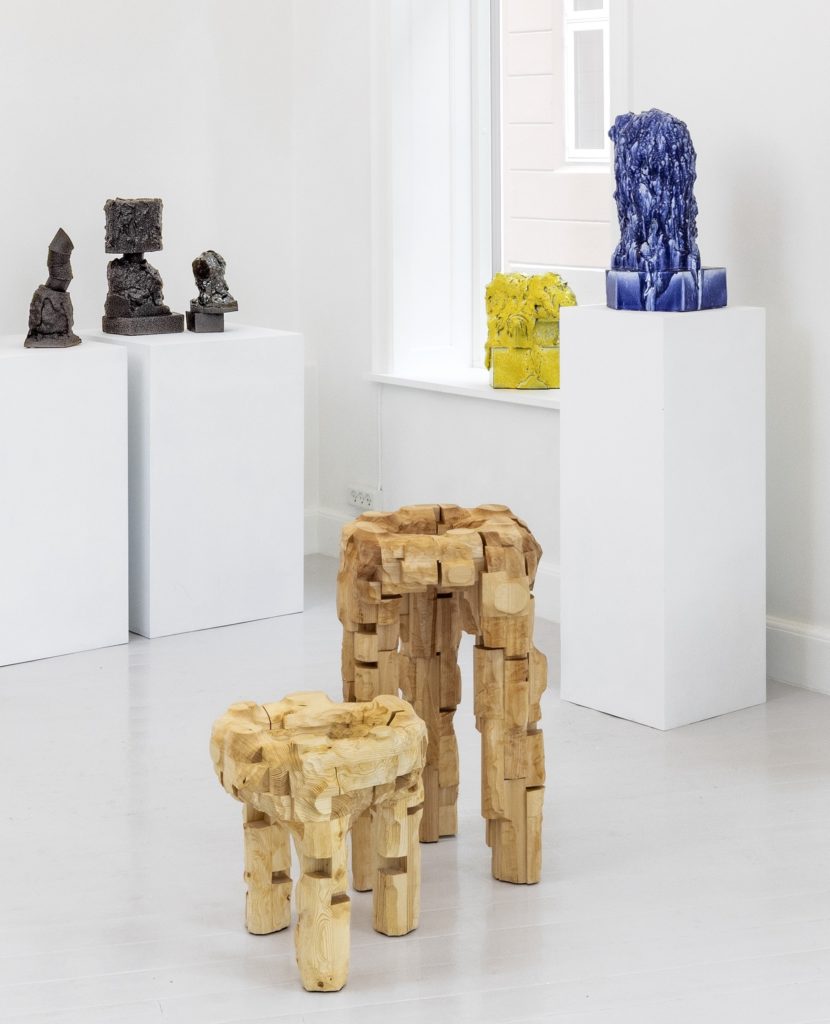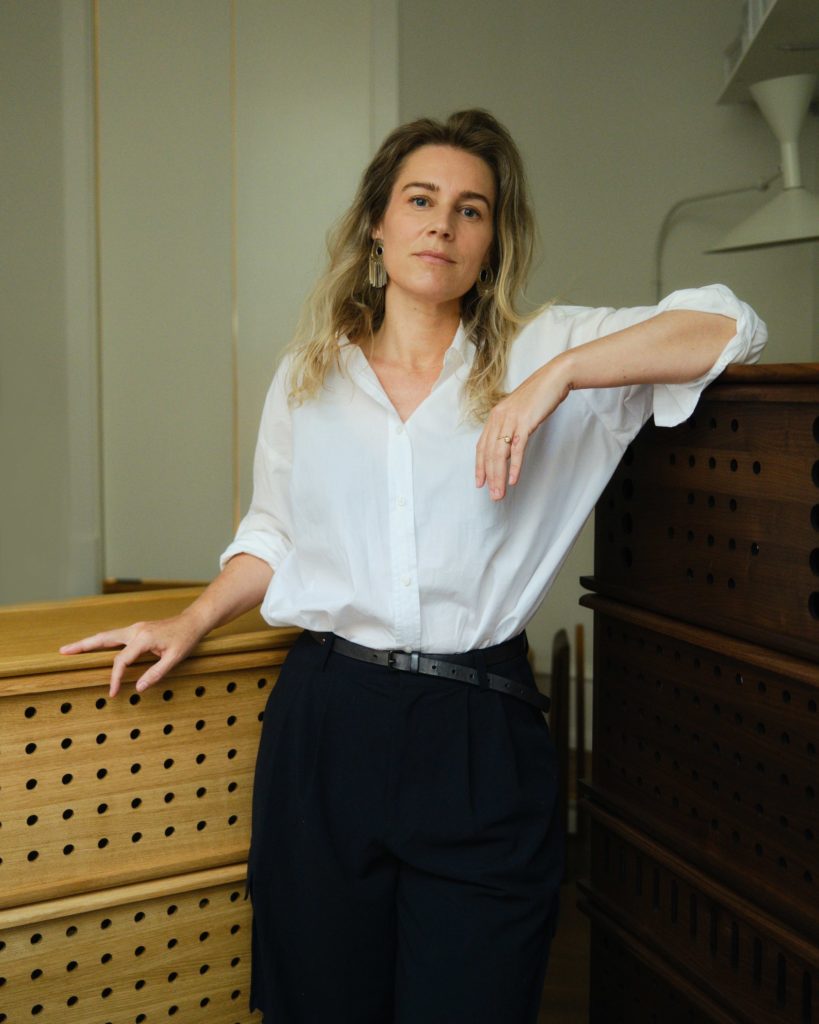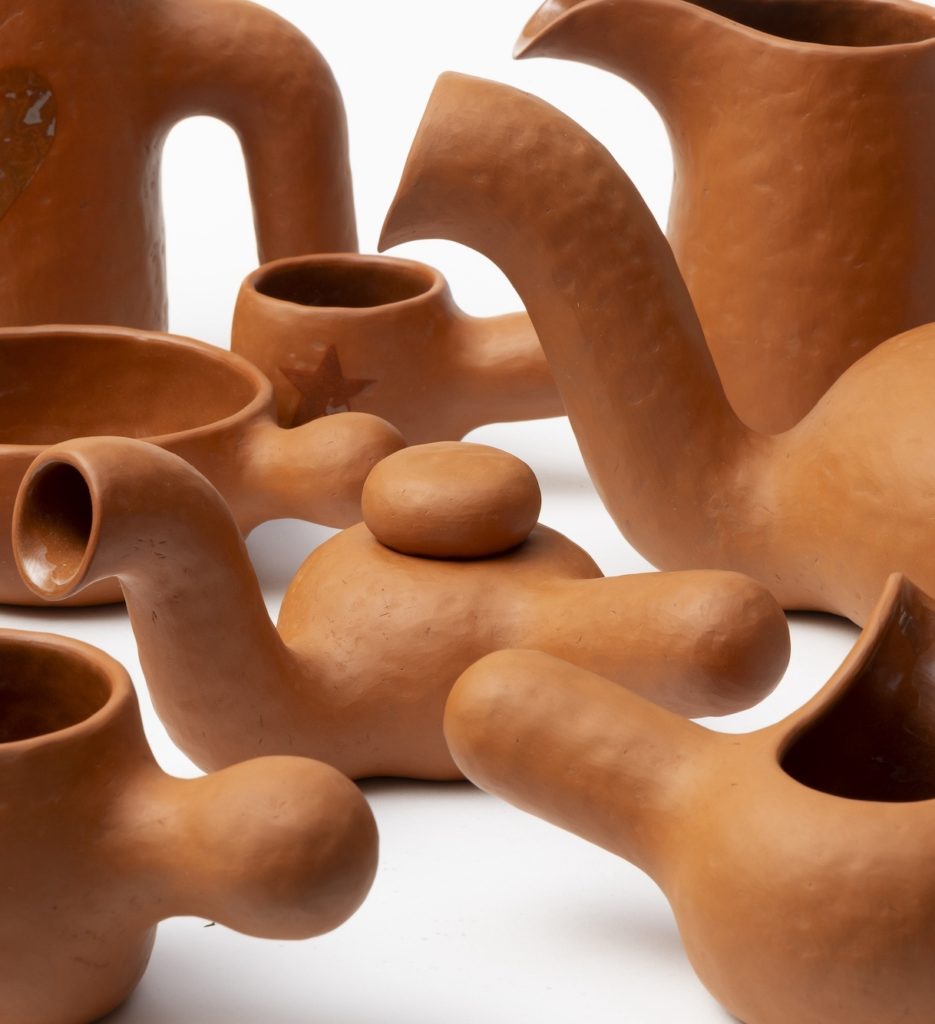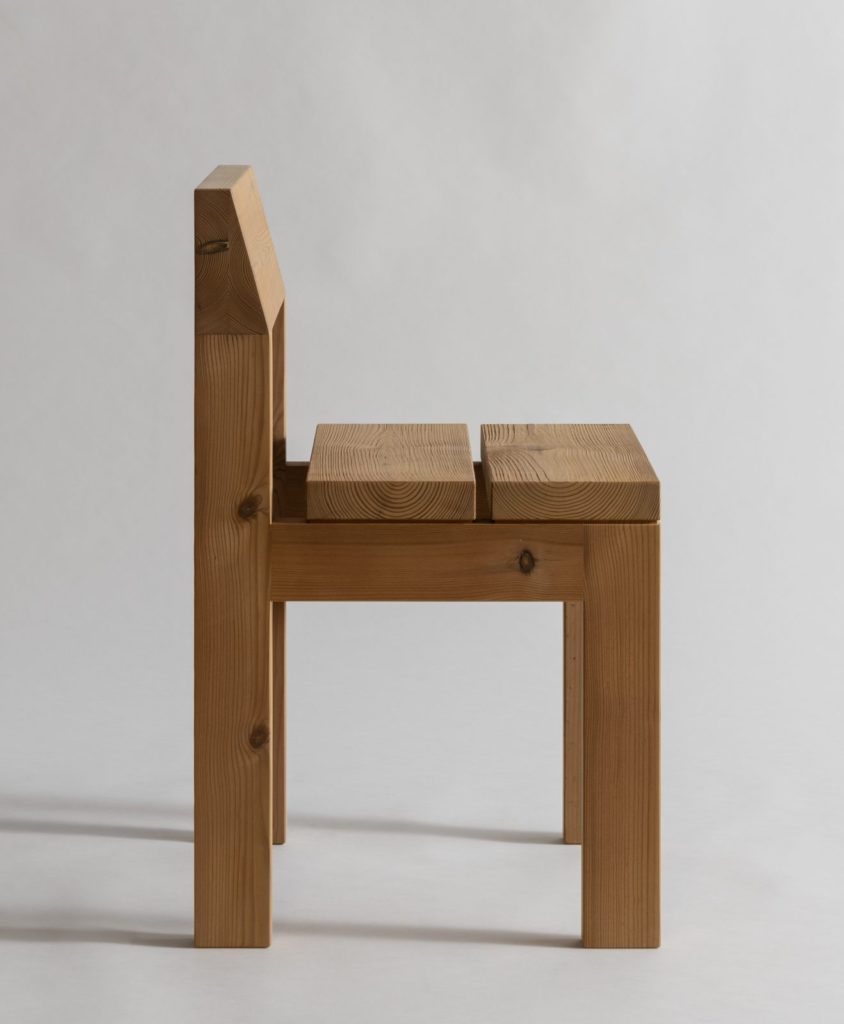Danish Ceramics – part 3 – Bente Skjøttgaard
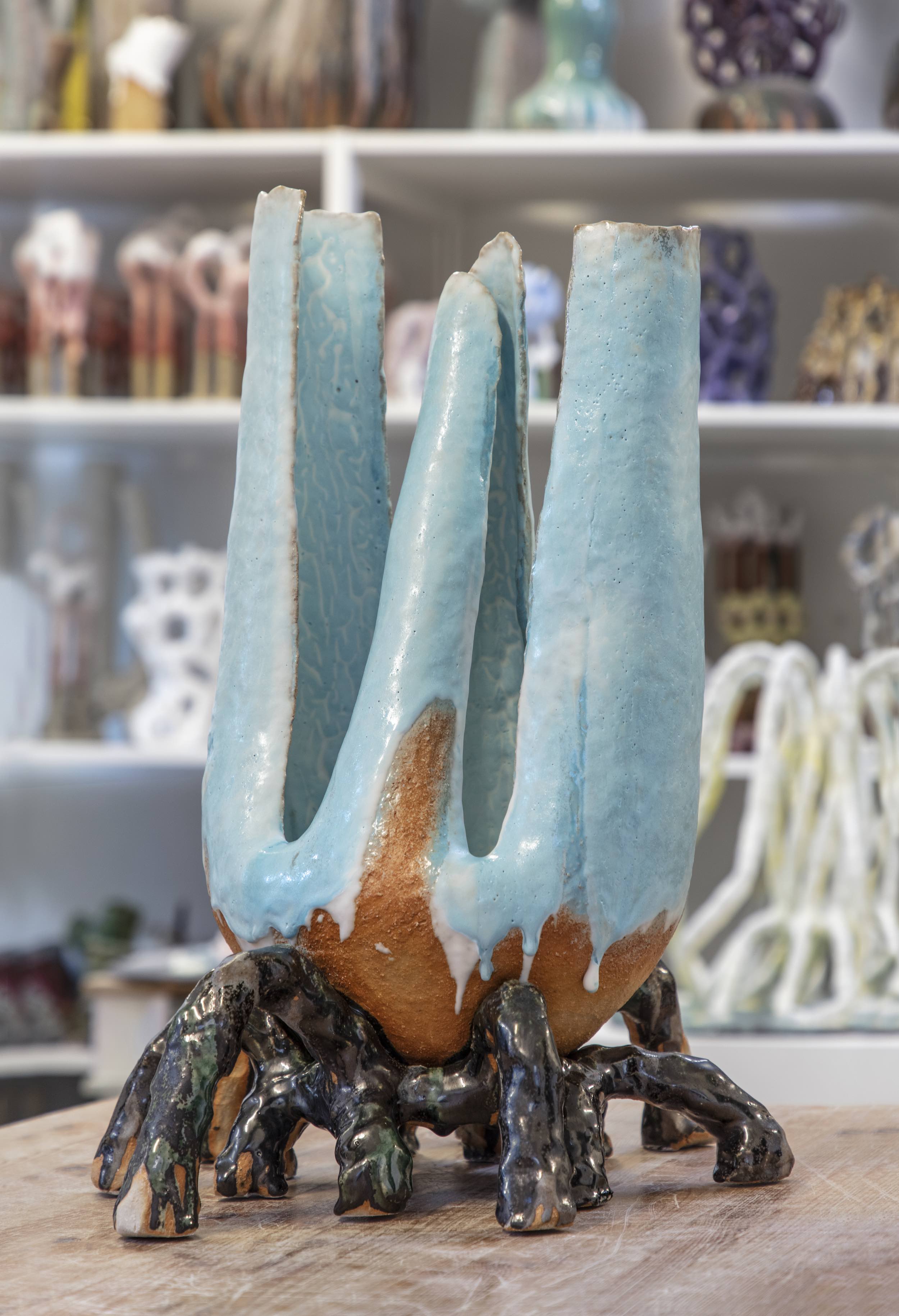
In a new series of articles, The Mindcraft Project focuses on some of Denmark’s influential designers and makers seen through the eyes of UK-based design, craft and architecture writer Grant Gibson.
In this article Grant Gibson meets Bente Skjøttgaard.
Watching the evolution of an artist is always a fascinating experience. On Bente Skjøttgaard’s website, for instance, you can see her work progress and change year on year. Looking at some conventional, if colourful, vessels on show at the Royal Copenhagen Shop in Copenhagen in 1990, it seems unlikely that Nostradamus could have predicted the strange organic, mutated, squid-like forms she’d be producing over 30 years later. As you flick through the years, there are detours into industrial-looking pieces – such as her Washbasin series in 1997 – and slowly, but surely, the vessel disappears from view, to be replaced by roots, branches and cloud shapes appear to defy gravity. The thread that holds the body of work together though is an obvious fascination with glaze.
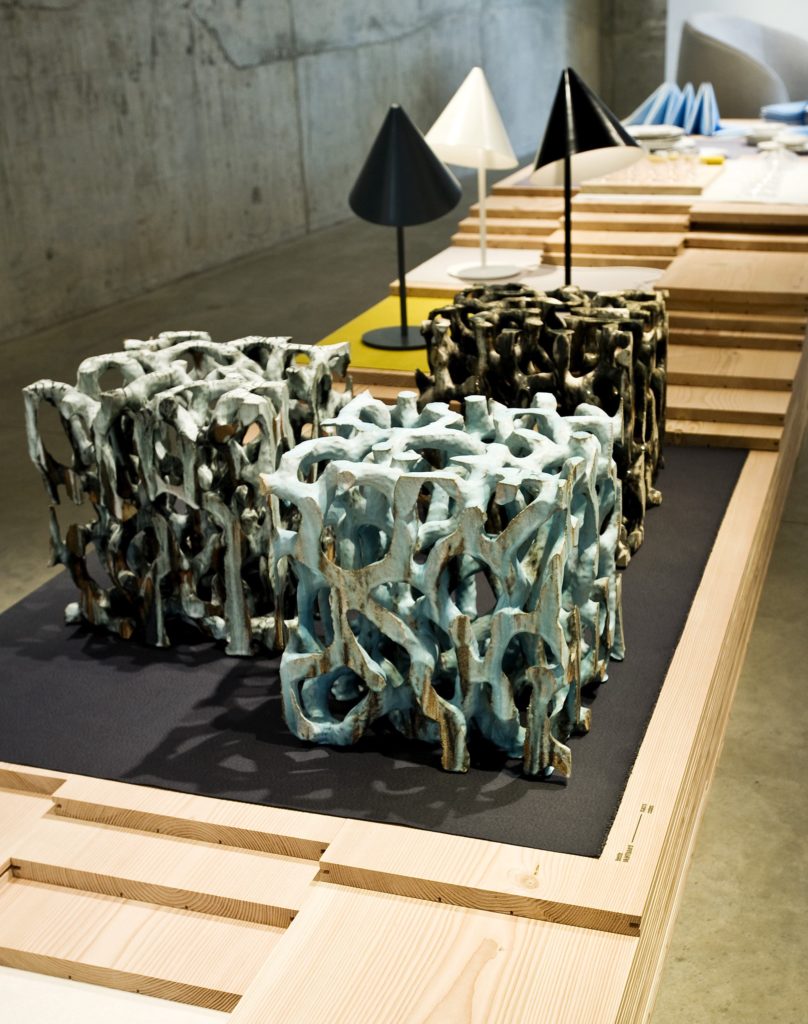
When I catch up with the artist over Zoom, she pre-empts my first question. “Everyone wants to know when I left the vessel. It’s something I’m asked often and I always tell then that I never left.” She leans away from her computer’s camera to reveal a clutch of pieces sat behind her that are definitely vessels. However, she will concede that her output changed dramatically after the turn of the Millennium with a series entitled Ramifications. Vases were still present in her exhibition at the Museum of International Ceramic Art, Denmark in 2003, but they had been joined by curious cubed objects that might have been inspired by mycelium. “When I made Ramifications it was groundbreaking for me because I was doing something that could look like something else,” she tells me. “Was that allowed? Because I was trained in the traditional ceramic milieu.”
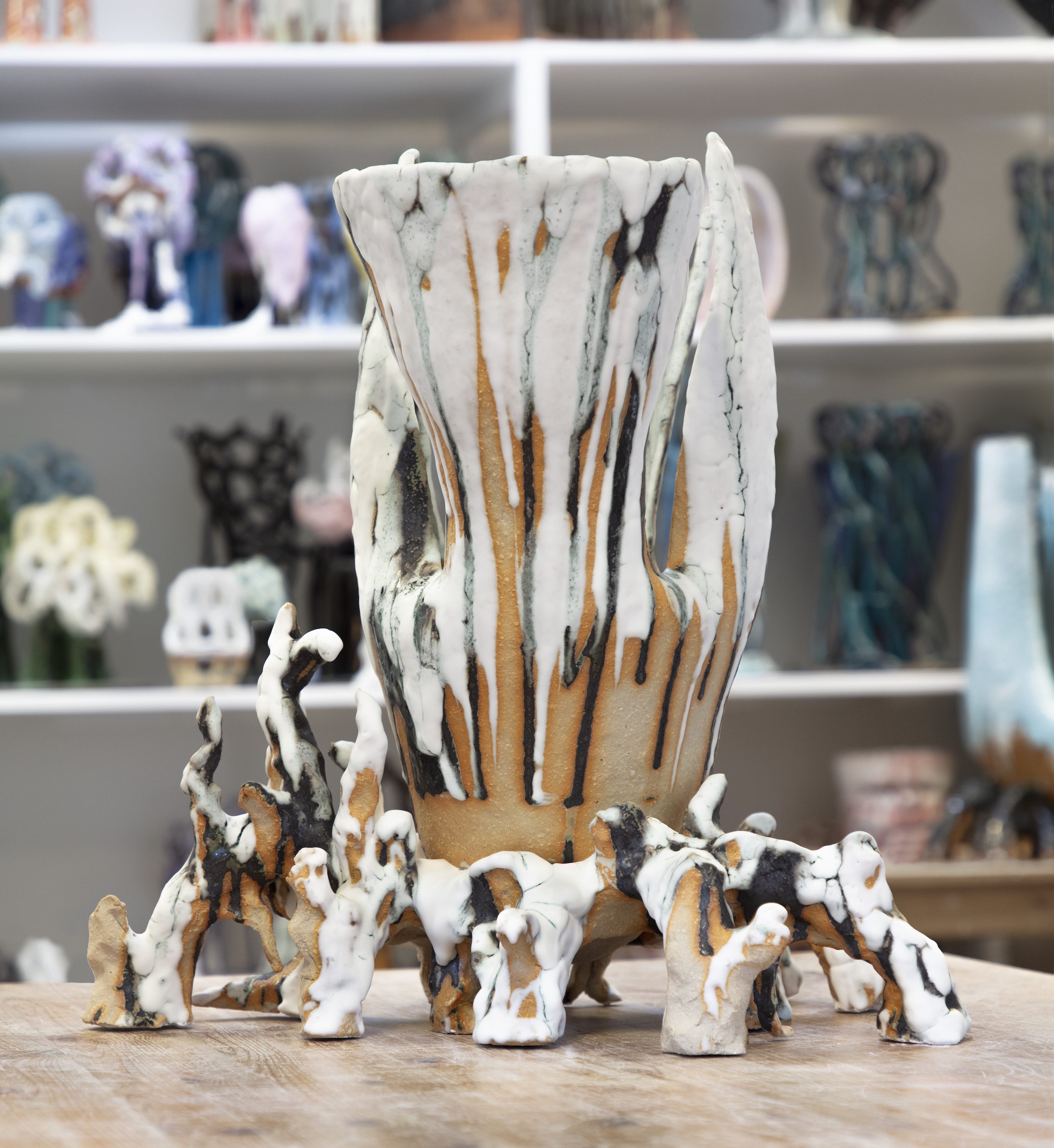
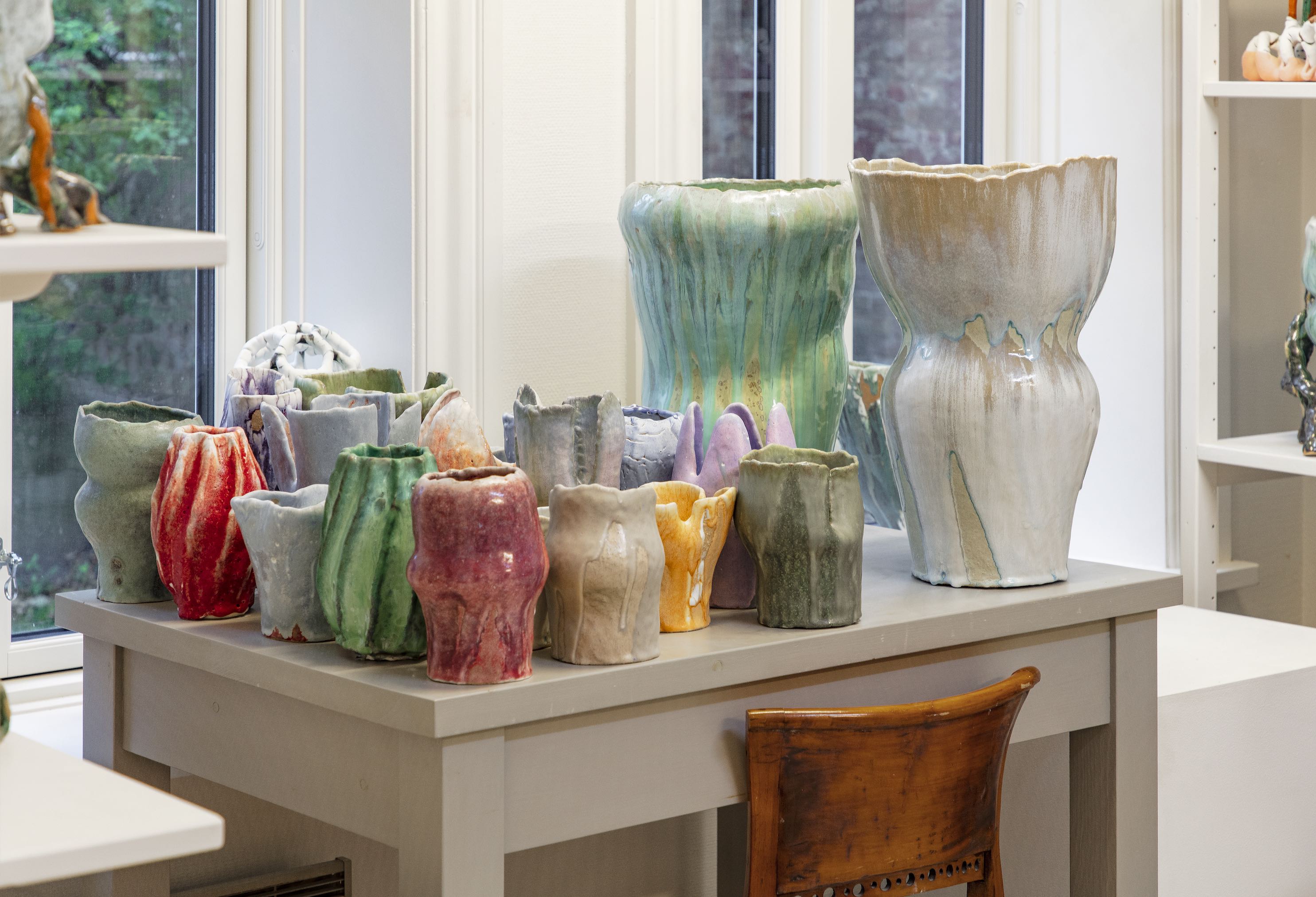
Skjøttgaard has been working with clay for over 40 years, discovering it as a child. She immediately took to the material. “I found clay fitted my temperament because, I suspect, I’m not very patient. It’s quite a free way of working. It felt natural, making with your hands without precise drawings.” Initially she also experimented with making clothes but quickly discovered “the sewing machine made me desperate”. After school, and a spell at folk school, she enrolled at the School of Arts and Crafts in Kolding, where her profound interest in glaze began. Subsequently, she won a place at the Royal Copenhagen Porcelain factory, where she spent four happy years experimenting in her own space in the factory. “I had a studio and could do what I wanted,” she remembers. “My works were fired in its large, coal chimney kiln. I developed some very beautiful glazes.” Her time there finished with the 1990 showcase and a slight unease at what she should do next. “For the first 10 years, after Royal Copenhagen, I didn’t know whether I wanted to be a designer or work more sculpturally.” The Ramifications series changed all that.

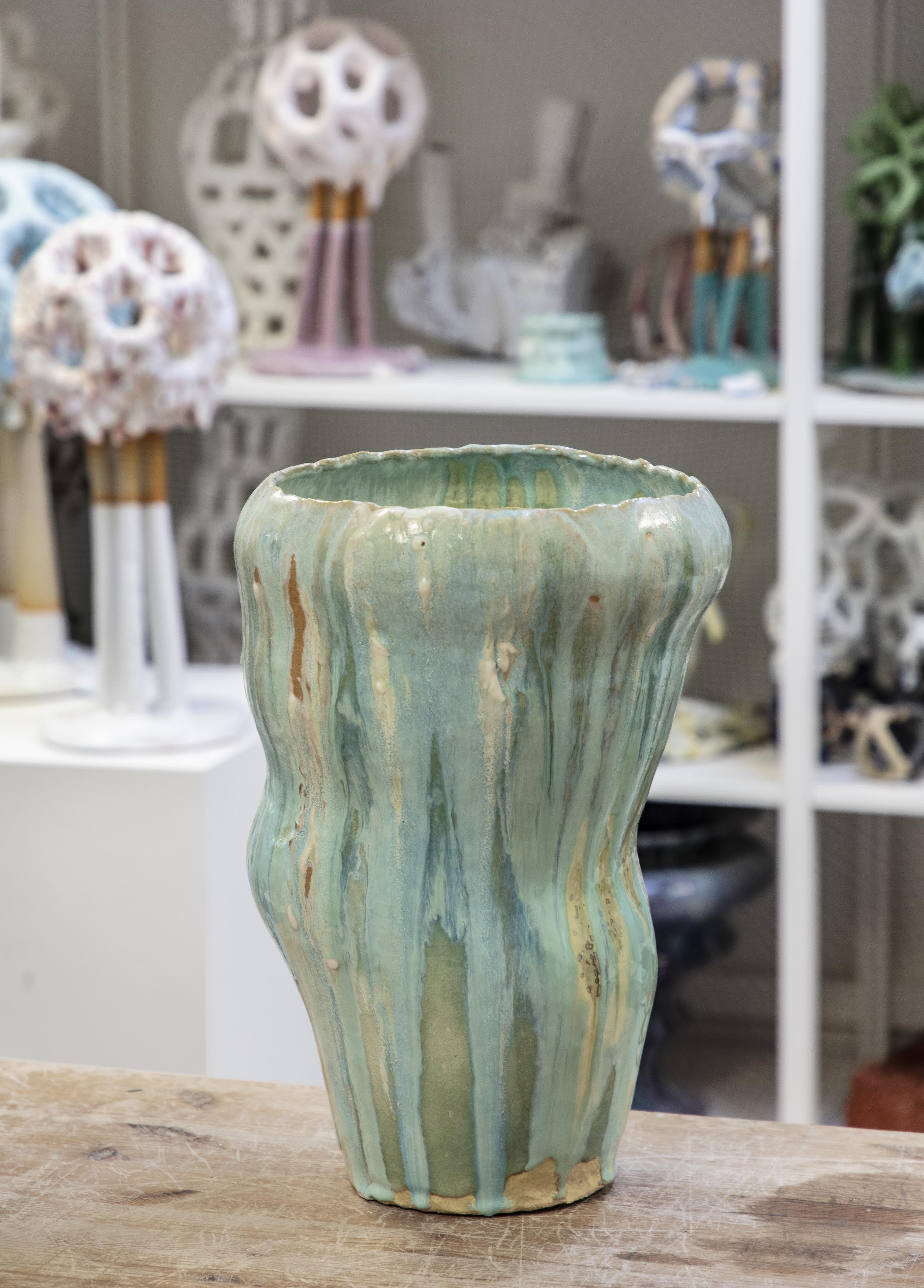
So, it seems reasonable to ask, how does her practice fit with the Danish modernist tradition? There’s a long pause and Skjøttgaard audibly exhales. “I think I’ve been part of a new break. In the beginning everybody said to me that my work looked as if it had been made in Kindergarten. I think now there has been a movement towards that kind of ceramics.” An inherently modest person, you fancy, she adds a caveat. “I don’t want to say I’ve been leading the way though. I remember the generation before me made very delicate, beautifully finished works, without glaze. So I looked a generation further back and was inspired by works from the Art Nouveau.”
Her process has developed over the years too. She draws loose sketches before working freely with the clay, creating what she describes as the ‘skeleton’ for the surface finish. Glaze, meanwhile, is poured (rather than brushed on or dipped) on liberally, often leaving an uneven and sometimes foaming finish. “First I build up works that I think are ‘in balance’,” she tells me. “In the kiln they can come out of balance. With both the glazes and the form I love to cooperate with the kiln. It’s not me that’s finishing the work completely. When you put something in the kiln it can change. Of course, I know almost what will happen but not totally. That gives me freedom not to worry about what I’ve done.” Pieces are sorted afterwards. “I need to have the time to make mistakes,” she confirms.
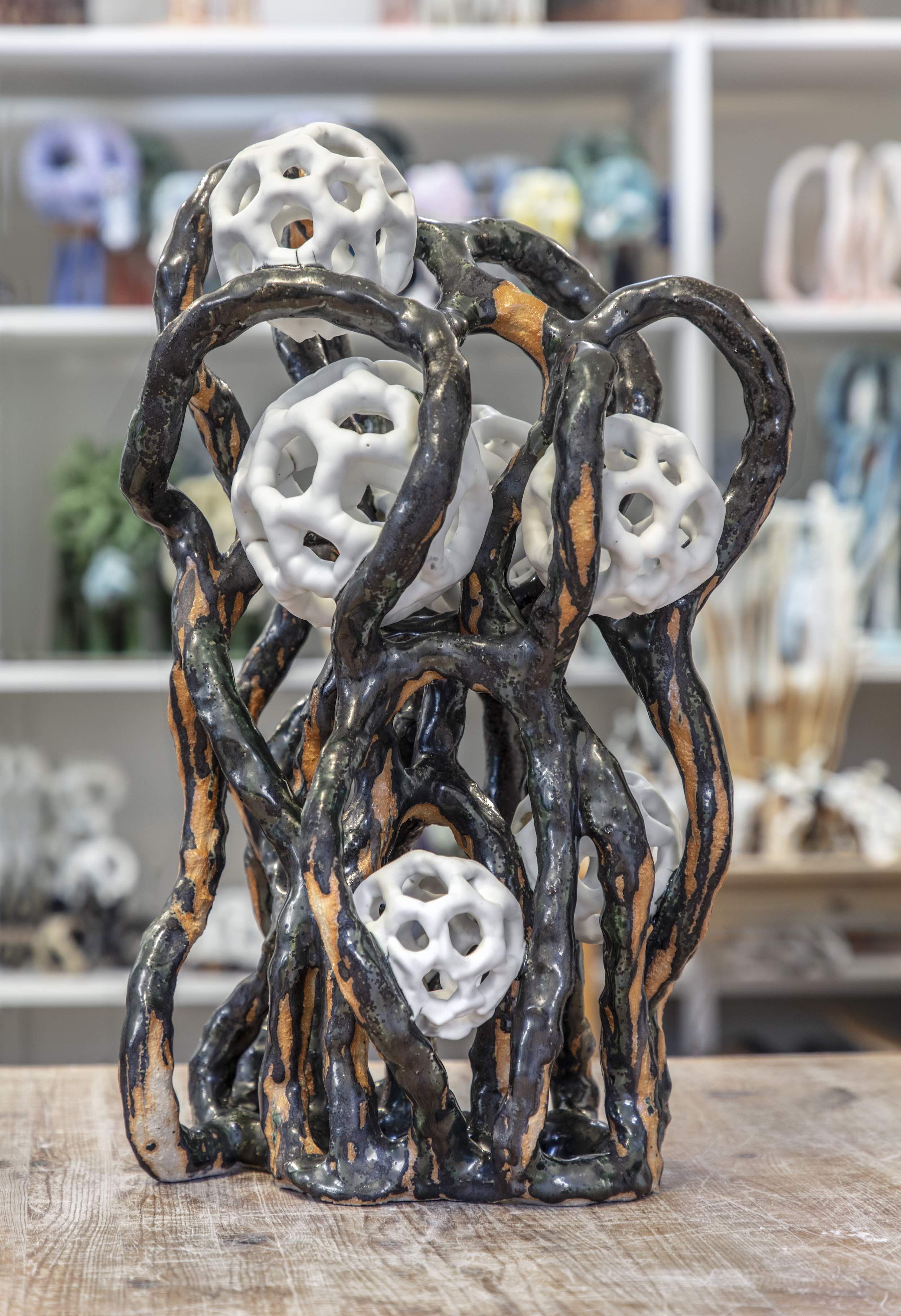
As for the future? There’s an upcoming show with the fashion designer, Anne Damgaard, at Peach Corner, a new exhibition venue she’s created with seven other ceramicists. While a retrospective, entitled Ten Tales of Glaze, runs at Køppe Contemporary Objects on Bornholm until 23 January 2022. She’s also keeping an eye on what might come next. While an emerging generation has taken her work with glaze to new extremes, she envisages change coming. “Maybe people will want to make precise forms again,” she concludes. And whatever the big new thing might be, the wheel will keep turning and evolution of ceramic art will continue.
Grant Gibson was previously editor of both Blueprint and Crafts magazines, and his work has been published in The Observer, The Guardian, Daily Telegraph, FRAME and Dwell. In 2019, he launched the critically acclaimed podcast series Material Matters with Grant Gibson.
